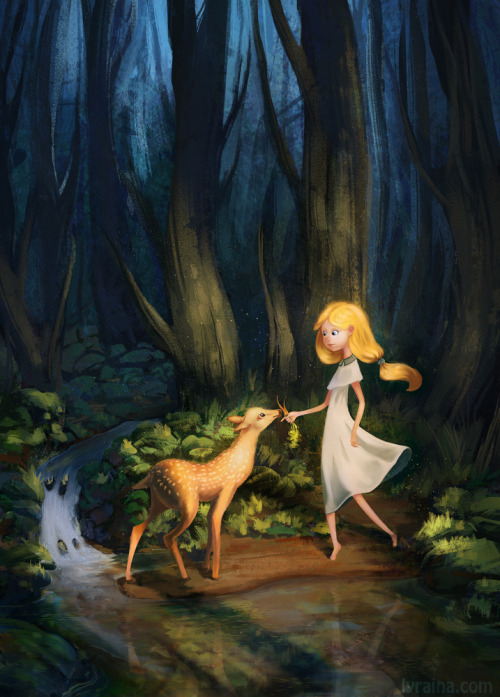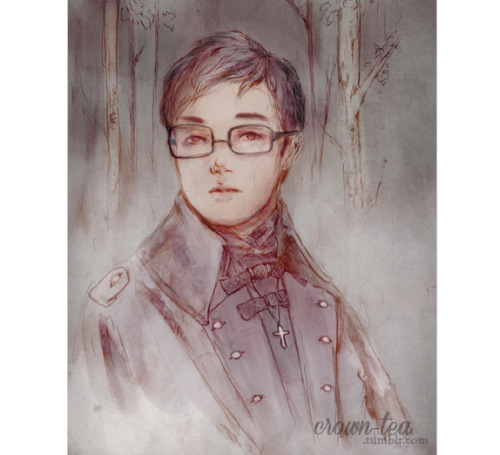Originally posted on Navigating The Stormy Shelves, September 2, 2014. Review by Morgan.

Star Ratings:
Characters: **** (4 stars)
Character Development: ***** (5 stars)
Plot: **** (4 stars)
Writing: ***** (5 stars)
Overall: ****½ (4 ½ stars)
Age Range Recommendation: 15 and up. (The main character might be quite young, but there’s torture and sexual violence.)
I had no idea that such a spellbinding, heartbreaking re-telling of “The Wild Swans” existed until I read this review on my blog feed. Thanks, Elizabeth, for drawing my attention to what has become one of my new favorite historical fantasy books! Daughter Of The Forest sets the fairy tale of the “Six Swans”/”Wild Swans” (depending upon the source) in 9th century Ireland. The plot follows the important landmarks of it’s fairy tale inspiration, but the historical setting and extraordinary characters turn the story into something new and breathtaking. Daughter Of The Forest is the beginning of a trilogy, but it stands quite well on its own. It took me a few days to get through the book, mostly because – after a slow start – it kept crushing my heart and I didn’t want to get too emotionally compromised. The sorrow felt by Sorcha as she weaves stinging plants into shirts to save her brothers, never saying a word despite the awful things which befall her, made me walk around sighing tragically myself. I was left feeling mute and weepy with my head stuck in Marillier’s tale, but also very much in love with the story.
The Kingdom of Sevenwaters is sheltered by forests: the sort of old Celtic wilderness that confounds anyone who wasn’t invited and may contain otherworldly spirits. Sorcha and her six older brothers grew up half wild, raised more by the woods and each other than by their father Lord Colum. The Lord of Sevenwaters is respected and brave, but not a very caring father. So Sorcha and her brothers rely on each other for good advice, for games, and for sympathy. She should have been the seventh son of a seventh son – particularly magical associations in the Irish beliefs which flesh out this re-located fairy tale. Instead, she will finish her childhood by becoming part of a more tragic story.
When the malicious Lady Oonagh entrances Lord Colum and gains control of his household, she turns Sorcha’s brothers into swans. Sorcha goes into hiding. She must weave six shirts from the painful starwort plant to break the curse, as she learns from a mysterious forest lady (a sidhe or fey woman very much like the Tuatha De Danann).But we’re playing by fairy rules here, often cruel and complicated just for some amusement. Simply weaving the shirts would not be enough; if Sorcha speaks one word, makes one sound, signifies any part of what she must do to save her brothers, the curse will be eternal and her brothers will always be swans. If she can remain silent and brave and true throughout all the tribulations which may befall her (and oh lord are there some difficult times ahead), then Sorcha can have her brothers back. Alas, when she gets half rescued/half kidnapped by a Briton Lord – the Britons being enemies with the Irish and with Lord Colum especially – Sorcha’s diligence and fierce love might not be enough to keep from speaking. Life on Lord Hugh’s land is brutal for a young, half wild, Irish girl. Between the rumors that her weaving is witchcraft and suspicions about her political purpose at court, it will be a miracle if Sorcha can finish the shirts without crying out in fear, snapping in frustration, or giving up hope entirely.
So far, so like the fairy-tales by the Grimms or Andersen. Daughter Of The Forest is a nice re-telling of the tale we already know. But the historical details, the setting, the characters, and the writing really turned it into a book I would read and love even if I didn’t already adore “The Wild Swans.” It follows the same general plot, so I wasn’t particularly surprised by any of the huge plot twists. I was often surprised none-the-less. Aside from the business of curses and occasional meddling by fairy folk, the book is richer in historical atmosphere than in fantasy. Even before Lady Oonagh cast her dark cloud of influence over Sevenwaters, the plot wheels were a’ turnin’.
The initial set-up took a little while to get going; we had to meet Sorcha and all her brothers, and learn how to tell them all apart . But then – calamity! A young Briton – possibly a spy, and definitely uninvited – is captured in the Forest and brought to Lord Colum. The methods used to coerce information from foreign intruders back in the 9th century were pretty horrific, so Sorcha helps her brother Finbar free the boy and bring him to safety. Aside from establishing Finbar as a thoughtful-yet-rash young lad (you can see why he’s sort of Sorcha’s favorite), this gives us an idea of the turmoil which was always churning in the Celtic lands back then. Sorcha’s family follows the old religion, yet they hide the Briton with a trusted and beloved Christian hermit. They have been brought up to fear outsiders, yet can feel sympathy for a boy who is caught up in the endless madness of ongoing war. The historical climate which gets introduced through this early harrowing experience sets up for really important conflicts later on. Without all the details about medieval Ireland and religion and general distrust, the drama would have to ride on the powers of love alone. Love is pretty strong in this sort of tale, but the bigger picture made it all feel real, and made Sorcha’s struggle all the more urgent.
Six brothers are a lot to keep track of. Six brothers, one sister, a hermit, various mythological presences, and a castle full of noblemen and women are an even bigger crowd. So it’s a testament to Juliette Marillier’s skill as a writer that I felt so connected with the entire cast of characters throughout the book. I do think that Lord Hugh’s villainous uncle was a little too nauseating to be believed, but he did fit into the fairy-tale mold quite well. Nearly everyone else had depth and an important role to play.
In the end, though, it’s Sorcha and her brothers who I’ll be remembering the most. For a group that spends over half of the book either silent or transformed into birds, they really played hacky-sack with my emotions. The too-short nights at each solstice, when the boys could turn back into humans, broke my heart and made me cry every time. It was just too unfair that Sorcha couldn’t tell them how she intended to help, and that they didn’t have enough time to help her in return. The romance and fighting in this book were moving, but nothing could compare to the bond between these siblings. Any time that bond was threatened I wanted to weep and wail, though I found myself trying to stay silent as long as our heroine had to bite back her own anguish.
I knew how the book would end. I’ve read so many versions of this story. All the same, I was surprised and enchanted by Juliette Mariller’s vision of the brothers turned into swans, and the sister who would do anything to save them. If you like old fairy tales or historical fiction steeped in folklore, go get Daughter Of The Forest from the library. (Or buy it from an independent bookshop!) If you are ok with getting your head stuck in medieval Ireland, and don’t mind worrying about these brothers as though they were your own, start reading this book. It now has a home on the same shelf as my other favorite re-told fairy tales, and I think they’ll find it’s very good company.
Some other fairy tale books I’ve reviewed:








